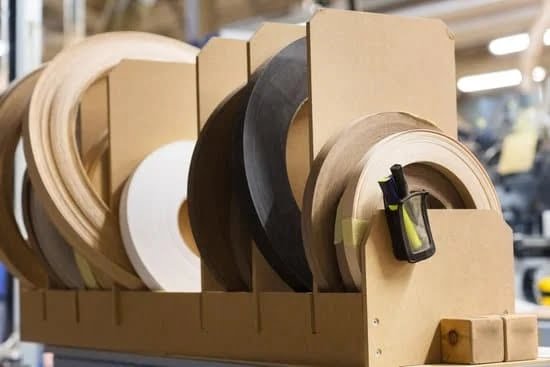Woodworking is a versatile and rewarding hobby that requires the use of various tools to create beautiful and functional pieces. One crucial aspect of woodworking is the use of holding tools, which are essential for securing workpieces in place during the construction process. So, what are holding tools in woodworking and why are they important?
Holding tools play a vital role in ensuring precision and safety when working with wood. Without the proper holding tools, it can be challenging to execute intricate cuts, joinery, and shaping techniques effectively. In this article, we will explore the different types of holding tools used in woodworking, their key features, how to use them effectively, safety tips when using them, DIY options for budget-conscious enthusiasts, and recommendations for beginners.
When it comes to woodworking projects, holding tools come in various forms such as clamps, vices, and vises. Each type serves a specific purpose and offers unique advantages depending on the nature of the task at hand. Understanding these different tools and their functions is crucial for achieving successful woodworking results.
In addition to discussing the types of holding tools available in woodworking, we will also delve into the key features to look for when selecting such equipment. Factors such as durability, grip strength, and versatility are important considerations that can greatly impact the effectiveness of holding tools in a woodshop environment. With these foundational aspects covered thoroughly in this article, readers will gain valuable insights into making informed decisions when choosing holding tools for their woodworking projects.
Different Types of Holding Tools
Bar Clamps
One of the most common types of clamps used in woodworking is the bar clamp. It consists of a long bar with adjustable clamping jaws that can be tightened or loosened to hold materials in place. Bar clamps are versatile and suitable for a wide range of woodworking projects, including gluing, assembling, and securing pieces together.
C-Clamps
C-clamps are another essential holding tool in woodworking. They have a simple, yet effective design with a fixed arm that holds the material in place and a screw mechanism to tighten the clamping jaw. C-clamps come in various sizes and are ideal for securing smaller pieces of wood or metal during cutting, drilling, or sanding processes.
Vices: Sturdy Holding Tools for Woodworking
Bench Vise
A bench vise is a stationary holding tool mounted on a workbench that provides a strong and stable grip. It consists of two parallel jaws operated by a screw mechanism to hold the workpiece securely in place. Bench vises are indispensable for tasks that require precise cutting, shaping, or carving, as they provide stability and control during the process.
Woodworking Vise
For woodworking projects specifically, a woodworking vise is an excellent holding tool designed to handle large and heavy pieces of wood. It typically features wider jaws and greater clamping capacity than other types of vises, making it suitable for furniture-making, cabinetry, and other carpentry tasks.
Vises: Essential Holding Tools for Woodworking
Vises are generally similar to clamps but operate using different mechanisms such as screws or levers to secure materials in place. Woodworkers often use vises when shaping or smoothing wood to ensure that it remains steady while they work.
By understanding the different types of holding tools such as clamps, vices, and vises available in woodworking, craftsmen can select the most appropriate tools according to their specific project needs.
Key Features of Holding Tools
When it comes to woodworking, holding tools are essential for securing workpieces in place during various stages of a project. These tools are designed to provide stability and support, allowing woodworkers to focus on the task at hand without worrying about their materials shifting or slipping. Understanding the key features of holding tools is crucial for selecting the right equipment for your woodworking needs.
Durability
One of the most important features to consider when choosing holding tools for woodworking is durability. Since these tools are subjected to significant pressure and force, it’s essential that they are constructed from sturdy materials that can withstand the demands of woodworking projects. Look for holding tools made from high-quality steel or other robust materials that can handle heavy-duty use without bending or breaking.
Grip Strength
Another vital feature to look for in holding tools is grip strength. Whether you’re using clamps, vices, or vises, you want your holding tools to provide a secure grip on the workpiece. This ensures that your materials remain firmly in place throughout cutting, drilling, sanding, or other woodworking processes. An adjustable grip also offers versatility, allowing woodworkers to accommodate various sizes and shapes of workpieces with ease.
Versatility
Versatility is also an important consideration when evaluating holding tools for woodworking applications. The ability to adapt and adjust holding tools to different workpiece dimensions and configurations enhances their overall utility. Look for holding tools that offer adjustable features such as jaw width, throat depth, and clamping pressure. This flexibility allows woodworkers to tackle a wide range of projects with ease and efficiency.
By prioritizing durability, grip strength, and versatility when selecting holding tools for woodworking, enthusiasts can ensure that their equipment meets their project needs effectively. Investing in high-quality holding tools not only improves safety and efficiency but also contributes to the overall success of woodworking endeavors.
How to Use Holding Tools Effectively
Holding tools are essential in woodworking as they help secure the workpiece in place, allowing for precise and accurate cuts and shaping. Without the proper use of holding tools, woodworking projects can be challenging and even dangerous. In this section, we will provide a step-by-step guide on how to effectively utilize holding tools in woodworking projects.
Here are some key steps to consider when using holding tools:
1. Choose the Right Holding Tool: Depending on the size and shape of your workpiece, select the appropriate holding tool such as clamps, vices, or vises. Consider the material of your workpiece and the type of cut or shaping you will be doing.
2. Positioning: Place the holding tool in a strategic position that provides sufficient support and stability for your workpiece. Make sure it is securely fastened to prevent any movement during the woodworking process.
3. Adjustments: Ensure that the holding tool is tightened or adjusted as needed to firmly grip the workpiece without causing damage. Check for any protruding screws or sharp edges that may affect the integrity of your workpiece.
4. Test Stability: Before making any cuts or shaping movements, give your workpiece a gentle tug or push to confirm that it is securely held in place by the holding tool.
5. Proceed with Caution: Once you have confirmed that your workpiece is properly secured, proceed with your woodworking tasks carefully and attentively.
By following these steps, you can use holding tools effectively in woodworking projects while ensuring safety and precision in your craftsmanship.
Safety Tips When Using Holding Tools
We cannot understate the importance of safety when it comes to using holding tools in woodworking. Whether you are a seasoned professional or a beginner, following safety precautions is crucial to prevent accidents and injuries. To ensure safe usage of holding tools, there are several key safety tips that every woodworker should keep in mind.
First and foremost, it is essential to wear appropriate personal protective equipment (PPE) when using holding tools. This includes safety goggles to protect your eyes from flying debris, ear protection to minimize noise exposure, and gloves for added grip and hand protection. Additionally, wearing a dust mask is important to avoid inhaling wood particles and dust that can be harmful to your respiratory system.
Another important safety tip when using holding tools is to inspect the tools for any damage or defects before use. This includes checking for loose or missing parts, ensuring that clamps and vises are secure and stable, and verifying that the tool is in proper working condition. Using damaged holding tools can lead to accidents and compromise the quality of your woodworking projects.
It is also crucial to maintain a clutter-free work area when using holding tools. Keeping your workspace organized not only improves efficiency but also reduces the risk of tripping over objects or accidentally knocking over tools. Proper lighting in your work area is also essential for visibility and precision when using holding tools.
| Safety Tip | Description |
|---|---|
| Wear personal protective equipment (PPE) | Protective gear such as goggles, ear protection, gloves, and dust masks should be worn at all times |
| Inspect holding tools before use | Check for any damage or defects that could compromise the safety and functionality of the tool |
| Maintain a clutter-free work area | Organize your workspace to prevent accidents caused by tripping or knocking over objects |
DIY Holding Tools
Woodworking can be an expensive hobby, especially when it comes to purchasing the necessary tools and equipment. However, with a little creativity and resourcefulness, woodworking enthusiasts can create their own holding tools at a fraction of the cost of store-bought options. Homemade holding tools can be just as effective and durable as their commercial counterparts, making them a fantastic option for those on a budget.
One popular DIY holding tool option is the homemade clamp. Using items such as scrap wood, bolts, and wing nuts, woodworkers can easily construct their own clamps to secure their workpieces during various woodworking projects. These homemade clamps are not only cost-effective but also customizable, allowing for unique sizes and shapes to accommodate different project needs.
In addition to homemade clamps, woodworking enthusiasts can also create their own bench vises using simple materials such as plywood and steel rods. Homemade bench vises provide the necessary grip strength and stability required for securing workpieces while offering significant cost savings compared to purchasing a pre-made vise. By exploring these DIY holding tool options, woodworking enthusiasts can enjoy the satisfaction of crafting their own tools while staying within their budget.
| DIY Holding Tool Option | Materials Needed |
|---|---|
| Homemade Clamp | Scrap wood, bolts, wing nuts |
| Homemade Bench Vise | Plywood, steel rods |
Best Holding Tools for Beginners
When it comes to woodworking, having the right holding tools is crucial, especially for beginners who may not have experience in handling wood and other materials. The right holding tools can make a significant difference in the outcome of a woodworking project, as they provide stability, precision, and safety. For those new to woodworking, here are some user-friendly holding tools that are essential for getting started:
Bar Clamps
One of the most versatile and user-friendly holding tools for beginners is the bar clamp. These clamps are easy to use and provide a strong grip, making them ideal for securing wood during glue-ups or when working on large projects. Bar clamps come in various sizes, allowing beginners to choose one that suits their specific needs.
Quick Clamps
Quick clamps, also known as F-clamps or speed clamps, are another essential holding tool for beginners. These clamps are designed for quick and easy one-handed operation, making them perfect for those who may be new to woodworking. Quick clamps are often used for securing workpieces to a workbench or holding materials together while glue is drying.
Bench Vises
For beginners looking for a reliable holding tool that can be mounted onto a workbench, a bench vise is an excellent choice. Bench vises provide a stable grip and can hold pieces securely while they are being worked on with hand tools or power tools. This type of holding tool is essential for creating a sturdy work surface and ensuring safety during woodworking tasks.
As beginners delve into the world of woodworking, investing in these user-friendly holding tools will set them up for success by providing the stability and security needed to tackle various projects with confidence. By starting with essential holding tools like bar clamps, quick clamps, and bench vises, newcomers can begin honing their skills in woodworking while ensuring safety and precision in their creations.
Conclusion
In conclusion, holding tools play a crucial role in woodworking projects by providing the necessary support and stability for various tasks. Whether it’s clamps, vices, or vises, these tools are essential for securing workpieces and ensuring precision and accuracy during cutting, shaping, or assembling wood. The key features to look for in holding tools include durability, grip strength, and versatility to accommodate different project needs.
Using holding tools effectively involves understanding their proper application and following safety precautions. It is important to ensure that the holding tool is securely fastened before beginning any woodworking task to prevent accidents or injuries. Additionally, DIY holding tool options can be explored for those on a budget, allowing woodworking enthusiasts to create their own makeshift solutions using readily available materials.
For beginners in woodworking, investing in user-friendly holding tools is highly recommended to facilitate learning and improve the overall woodworking experience. These tools can help build confidence and skill while providing the necessary assistance for completing projects with precision and ease. In essence, holding tools are indispensable assets in any woodworker’s toolkit, and understanding their significance can greatly enhance the quality of craftsmanship and safety in woodworking endeavors.
Frequently Asked Questions
What Is Holding Tools in Woodworking?
Holding tools in woodworking refers to the devices or mechanisms used to secure wood in place during various tasks such as cutting, shaping, or joining. These tools help ensure safety and precision while working with wood.
What Tools Are Used to Hold Wood?
There are several tools commonly used to hold wood in place during woodworking projects. Clamps, vises, holdfasts, bench dogs, and handscrews are some examples of holding tools that provide the necessary grip and stability when working with wood.
What Are the Uses of Holding Tools in Workshop?
Holding tools play a crucial role in a workshop by allowing woodworkers to securely fasten pieces of wood, ensuring accurate cuts, joints, and shaping. They also contribute to safety by preventing movement or slippage of the workpiece during various operations. Ultimately, holding tools help maintain control and precision when working with wood.

Hi everyone! I’m a woodworker and blogger, and this is my woodworking blog. In my blog, I share tips and tricks for woodworkers of all skill levels, as well as project ideas that you can try yourself.





